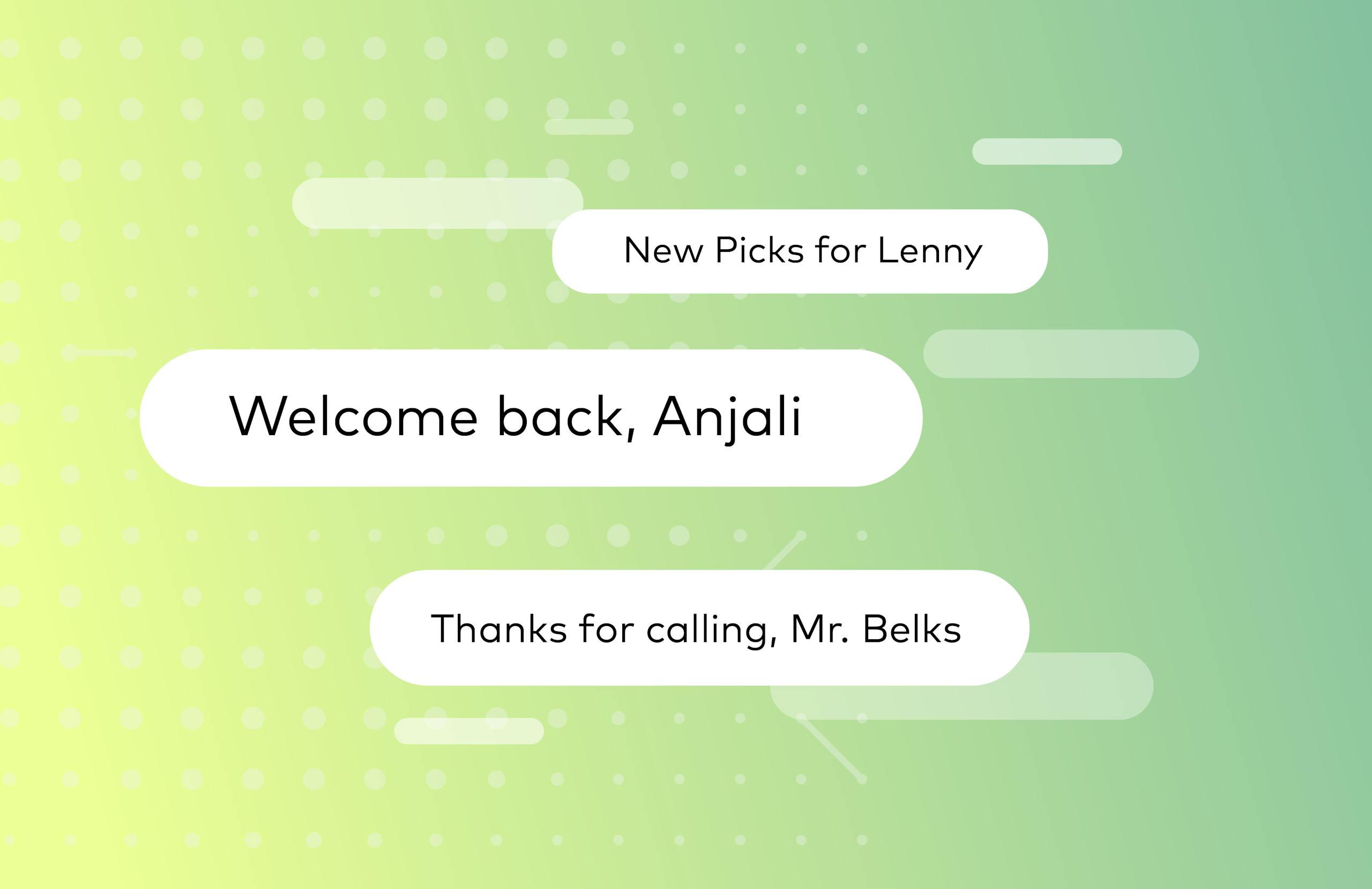We wake up every day and step into a world of personalization, whether we realize it or not. Turn on Netflix and you’ll receive an abundance of recommendations for shows and movies that you love. Check your email around your birthday and receive special promotional discounts for your next purchase. If you're bored of your current music, Spotify will conjure up custom-made playlists.
At this point in the game, personalization is merely table stakes. You can either lean in or lose out, and if you don't do it right, someone else will (and probably already is).
Customers are more than just sources of revenue — they’re humans who like to be recognized as individuals with different desires, personalities, and experiences. It feels good when someone you’ve met in passing greets you by name, and consumers feel the same. It makes a world of difference to a client when a business recognizes them and accommodates their unique needs.
Personalization has rewritten the script to marketing, improving things for the customer and the brand. But what does personalization look like in action? There are three things to remember:
Find moments that matter
Make the experience smooth
Treat them like old friends
Find the most meaningful moments
From the brand’s perspective, personalization is a method to improve specific business outcomes and maximize customer engagement. When thinking about how to ramp up value for your business and customer, think in terms of the moments that matter. This means pinpointing the moments and mini-journeys that have the greatest opportunity to shrink cost, increase revenue, or get rid of friction for customers. Use what you know about the customer to make your brand easier to conduct business with — in other words, use data to serve your prospects.
For example, think of when you’re making a purchase online. Isn’t it a lot simpler to make a purchase if you have an account for the retailer and all your relevant information, such as payment type and location, is already there? This is a great example of a simple addition that makes the customer’s journey to purchase as smooth as possible. Think about the entire customer lifestyle and apply the same concept to browsing, checkout, delivery, loyalty, promotions, and voila, you have personalization at scale.
The more effectively you can use what you know about a customer to personalize their experience, the less information they have to give you in order for that transaction to be successful.
The more effectively you can use what you know about a customer to personalize their experience, the less information they have to give you in order for that transaction to be successful. Happy patrons aside, businesses also gain myriad bonuses, like increased engagement, growth, and loyalty.
Comprehending your customers
A whopping 80% of consumers not only want personalized experiences but also expect them — a brand’s goal is to find out how to use personalization to the benefit of their customers.
To a customer, effective personalization means knowing their current needs, remembering who they are and what they’ve done on any channel or device, and being able to anticipate their future needs. This is a tall order, unless you have a comprehensive customer profile (a.k.a. a Customer 360). An in-depth customer profile will tell you what messaging your prospects respond to, how they like to be contacted, the content they prefer, and more.
When you begin to tweak and refine the above strategies with data, your customers will begin to see benefits such as increased relevancy, more valuable interactions, and fluid business transactions.
How one brand got personal
Alaska Airlines built multi-step customer journeys to drive revenue, using personalization to inform their strategy. They built a comprehensive customer profile using data from booking, reservations, loyalty, and their mobile app, then segmented based on the route, aircraft type, and cabin seating. Their findings led to a dynamic pre-trip journey orchestration triggering up to four personalized messages per guest. The results? Conversion rates skyrocketed by +198%, their open rate climbed by +61.1% and they saved 30% on online advertising by using first-party data for targeting.
Personalization is more than a buzzword, it’s a method that can serve every business. Successful personalization at scale leads to increased engagement, improved conversion, rising customer lifetime value, reduced churn, boosted loyalty, and speedy business growth. Use it to sow the seeds of success and watch as you and your customers enjoy the rewards.
To learn more about how to personalize at scale, check out our in-depth guide.
